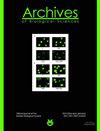利用机器学习评估透析液近红外光谱监测尿毒症毒素血液浓度的准确性
IF 0.8
4区 生物学
Q4 BIOLOGY
引用次数: 0
摘要
血液透析(HD)清除患者体内的含氮废物?血液沿浓度梯度通过半透膜。近红外光谱(NIRS)是一种尚未开发的监测几种分子浓度的方法,这些分子浓度反映了透析液样品中HD过程的有效性。在这项研究中,我们旨在通过评估透析液光谱与血清尿素、肌酐和尿酸水平之间的相关性,来评估近红外光谱作为一种无创检测尿毒症溶质的技术。采集35例维持HD患者的血液和透析液样本。每个透析液样品在700 ~ 1700 nm波长范围内测量3次吸收光谱,得到315个光谱数据集。使用人工神经网络(ANN)学习技术来评估透析液nir吸收光谱记录与选定尿毒症毒素血清水平之间的相关性。废透析液的nir吸收光谱与血清尿素(R=0.91)和尿酸(R=0.91)有很好的相关性,与血清肌酐(R=0.97)有很好的相关性。这些结果支持近红外光谱作为一种无创、安全、准确和重复的在线监测尿毒症毒素技术的应用,以帮助临床医生评估HD的效率和HD治疗的个性化。本文章由计算机程序翻译,如有差异,请以英文原文为准。
Employing machine learning to assess the accuracy of nearinfrared spectroscopy of spent dialysate fluid in monitoring the blood concentrations of uremic toxins
Hemodialysis (HD) removes nitrogenous waste products from patients? blood through a semipermeable membrane along a concentration gradient. Near-infrared spectroscopy (NIRS) is an underexplored method of monitoring the concentrations of several molecules that reflect the efficacy of the HD process in dialysate samples. In this study, we aimed to evaluate NIRS as a technique for the non-invasive detection of uremic solutes by assessing the correlations between the spectrum of the spent dialysate and the serum levels of urea, creatinine, and uric acid. Blood and dialysate samples were taken from 35 patients on maintenance HD. The absorption spectrum of each dialysate sample was measured three times in the wavelength range of 700-1700 nm, resulting in a dataset with 315 spectra. The artificial neural network (ANN) learning technique was used to assess the correlations between the recorded NIR-absorbance spectra of the spent dialysate and serum levels of selected uremic toxins. Very good correlations between the NIR-absorbance spectra of the spent dialysate fluid with serum urea (R=0.91) and uric acid (R=0.91) and an excellent correlation with serum creatinine (R=0.97) were obtained. These results support the application of NIRS as a non-invasive, safe, accurate, and repetitive technique for online monitoring of uremic toxins to assist clinicians in assessing HD efficiency and individualization of HD treatments.
求助全文
通过发布文献求助,成功后即可免费获取论文全文。
去求助
来源期刊
CiteScore
1.40
自引率
0.00%
发文量
25
审稿时长
3-8 weeks
期刊介绍:
The Archives of Biological Sciences is a multidisciplinary journal that covers original research in a wide range of subjects in life science, including biology, ecology, human biology and biomedical research.
The Archives of Biological Sciences features articles in genetics, botany and zoology (including higher and lower terrestrial and aquatic plants and animals, prokaryote biology, algology, mycology, entomology, etc.); biological systematics; evolution; biochemistry, molecular and cell biology, including all aspects of normal cell functioning, from embryonic to differentiated tissues and in different pathological states; physiology, including chronobiology, thermal biology, cryobiology; radiobiology; neurobiology; immunology, including human immunology; human biology, including the biological basis of specific human pathologies and disease management.

 求助内容:
求助内容: 应助结果提醒方式:
应助结果提醒方式:


